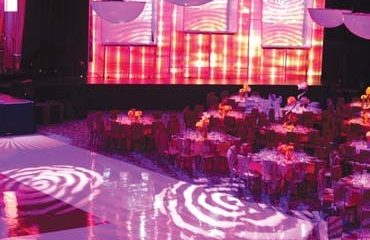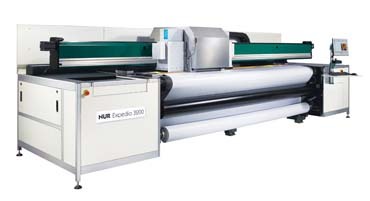Darek Johnson, ST 's senior technology editor, and I just returned from our annual trek to the Lightfair International tradeshow, which was held in Las Vegas, May 29 to June 1. I've been going for the past eight years and have primarily observed the evolution of LEDs (75 of the 276 entries in the New Product Showcase involved LEDs).
As we wandered the extremely elongated setup at the Las Vegas Convention Center (if you think the ISA Sign Expo layout in April was inordinately narrow and long, multiply it by two), we kept seeing the same catchphrase: daylight harvesting. In a nutshell, this means taking maximum advantage of natural daylight before turning on the electricity, all in the name of saving money, er, energy conservation. I kept asking exhibitors if any customers had used daylight harvesting for signage, and I received deer-in-the-headlights reactions.
Darek's always a few paces ahead of me and the rest of the sign industry. Perhaps a winner in an ST Trivial Pursuit game will recall his August 2003 column (page 16) about this very topic. In it, he addressed how hotels and casinos were emphasizing daylight harvesting. As usual, that particular CAS/Tech Update column is chock full of specific examples. Read it again (or for the first time).
Darek and I attended the GE luncheon at Lightfair. The speaker's overriding theme was the company's Ecomagination® program. (The television commercials that show an elephant doing the Gene Kelly routine to "Singing in the Rain"? That's GE.) The luncheon slide show provided numerous examples of the energy savings replacement products could provide.
A GE PowerPoint stated: If every U.S. household replaced one 100W incandescent bulb with a GE compact fluorescent bulb, over the bulb's life, the energy savings would light one million U.S. homes for a year. Also, somewhat more chillingly, "All known oil and natural-gas reserves should be depleted by 2045." The program's primary theme is that the most renewable, abundant resource available is our imagination.
Flip back to last month, when we published the Lighting Survey (June, 2006, page 88). Go to the last chart, Table 11, in which we ask readers to rate seven different criteria that affect their decision when choosing between neon and LEDs. The higher the number, the less important the criteria. Guess what's finished dead last all three years that we've asked the question? Energy savings.
Advertisement
When the LED providers first brought their products to the sign industry a few years ago, they cleverly courted the end users instead of the sign industry. Their main rhetoric? Energy savings.
The sign industry has been fighting California's edicts that mandate LED usage for several years, and guess what the Golden State's prime motivation is? Energy savings. I wrote about this several years ago (see ST, August 2002, page 176). Admittedly, much of what the Left Coast does simply amuses the rest of us, but this particular sentiment seems to have traveled considerably further east.
Read the letter from Jeremy Johnson (page 10). He's with a company that manufacturers electronic message centers. However, he's not writing as an employee; he's writing as a driving force in the new Electronic Display Educational Resource Assn. (EDERA, see ST, February 2006, page 160). Now, he doesn't specifically address energy savings, but his primary point is that the sign industry needs to police itself … before government entities do. Does anyone need to be reminded of UL 2161?
Interestingly, as I was researching columnists for the Commemorative Edition that accompanies this regular ST issue, I read some of the World War II editorials that decried how government sanctions had unfairly targeted the sign industry. ST believed the sign industry was being asked to sacrifice much more than other industries.
Perhaps the sign industry should voluntarily at least consider some energy-savings efforts. Call it patriotism. Sure, the amount of energy the sign industry uses is probably negligible in the scheme of things, but it would be a nice, benevolent gesture on the part of an unrecognized industry that incessantly must justify its very existence to many governmental entities. Proactive earns more brownie points than reactive. But historically, the sign industry only seems to make light of it.

 Tip Sheet1 week ago
Tip Sheet1 week ago
 Ask Signs of the Times2 days ago
Ask Signs of the Times2 days ago
 Real Deal1 week ago
Real Deal1 week ago
 Benchmarks4 days ago
Benchmarks4 days ago
 Editor's Note2 weeks ago
Editor's Note2 weeks ago
 Women in Signs1 week ago
Women in Signs1 week ago
 Product Buying + Technology2 weeks ago
Product Buying + Technology2 weeks ago
 Photo Gallery6 days ago
Photo Gallery6 days ago














